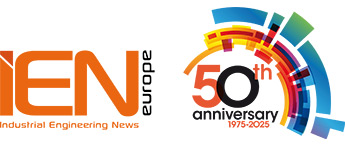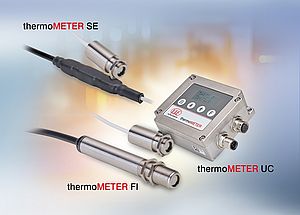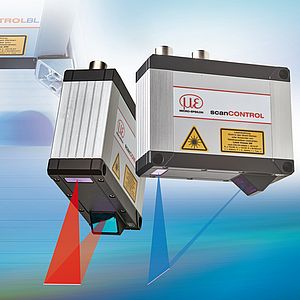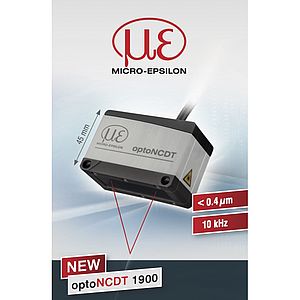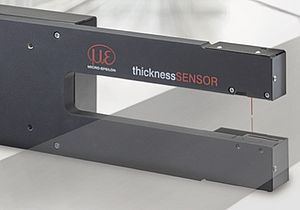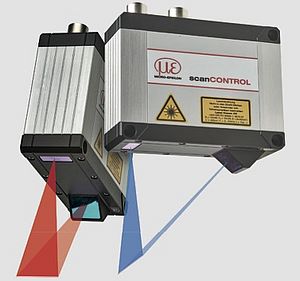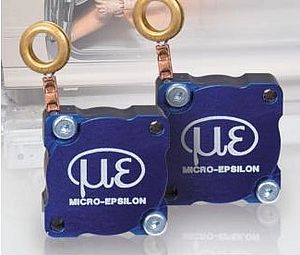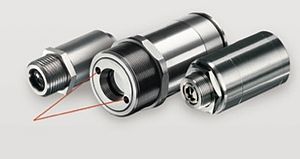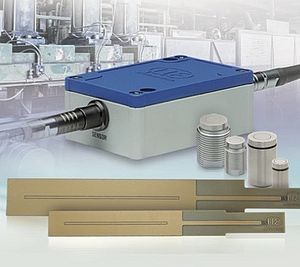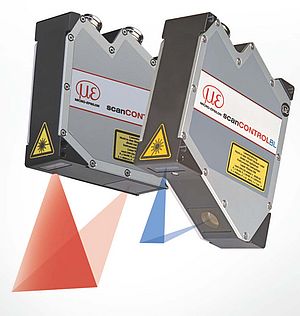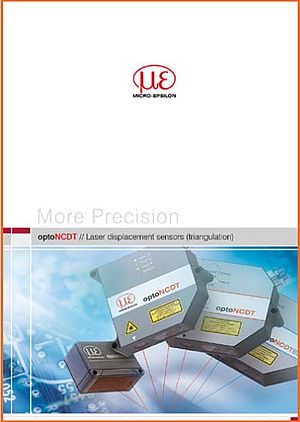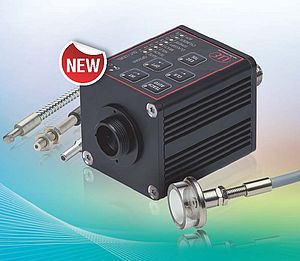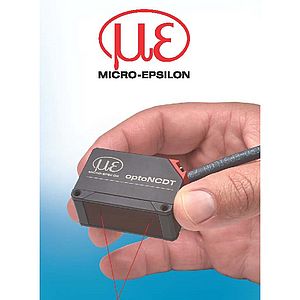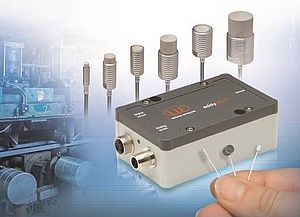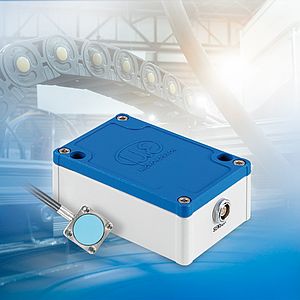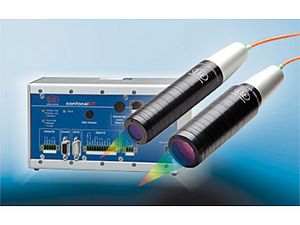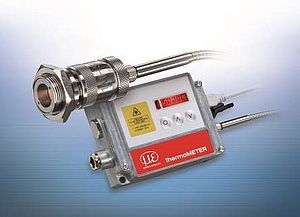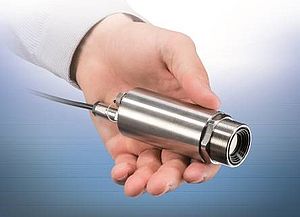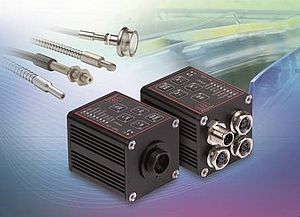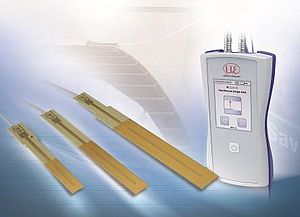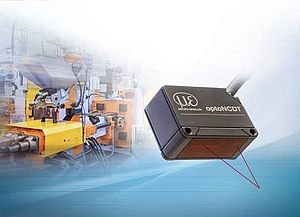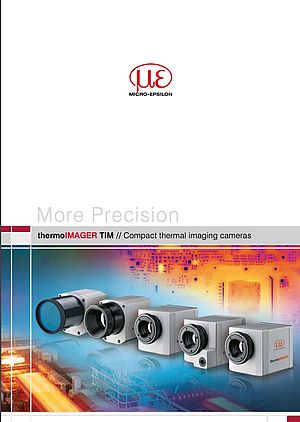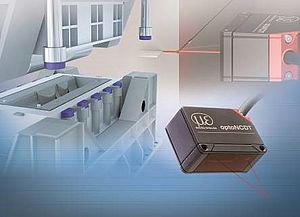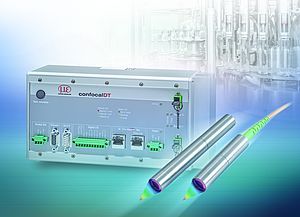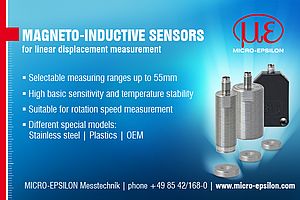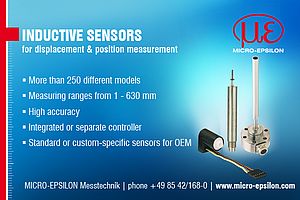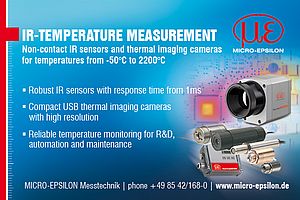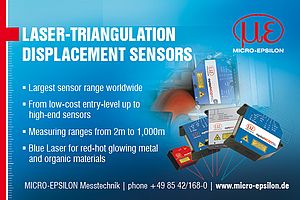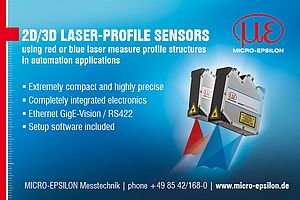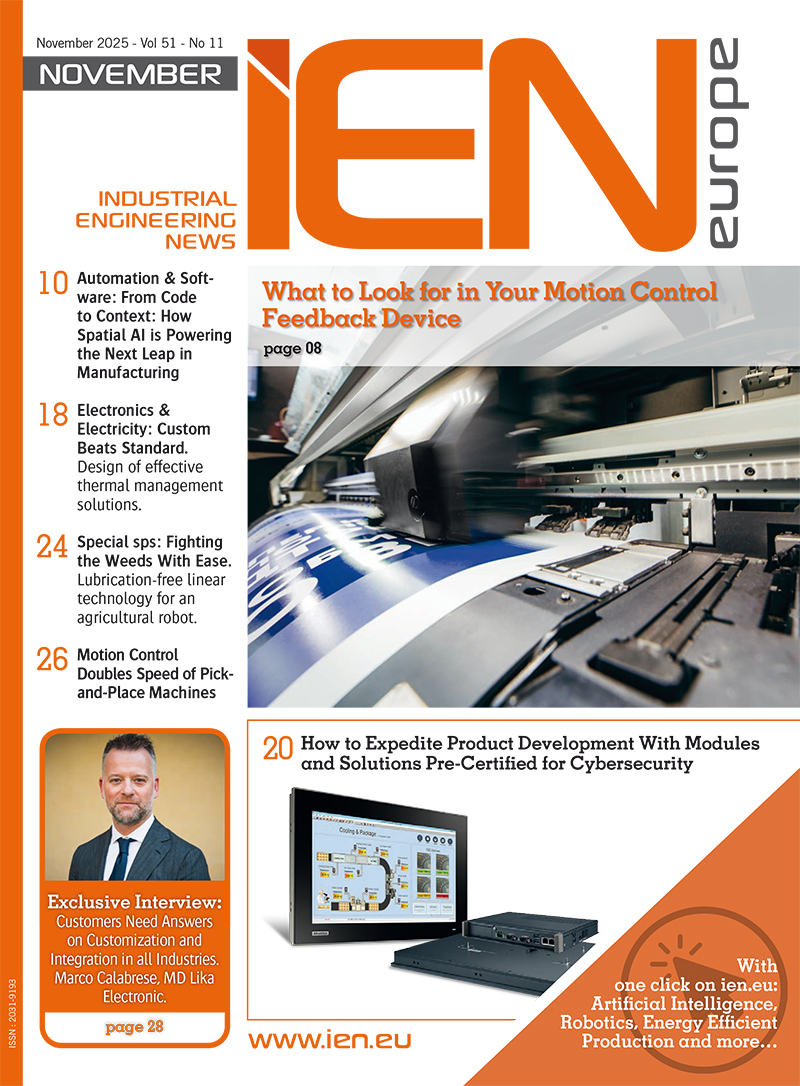Micro-Epsilon offers a wide portfolio of laser triangulation sensors and sets standards in accuracy and precision. Sensors from Micro-Epsilon combine a compact design with an integrated controller and operation via a web interface. High-precision measurement is achieved by means of the smallest light spot on the measuring object. Therefore, the sensors open up numerous fields of application in factory automation, electronics production, robotics and vehicle construction.
Designed for high accuracy
Laser triangulation sensors - usually referred to as laser sensors for short - are preferred for measuring with high accuracy and resolution. The measuring principle of laser triangulation
is based on a simple geometric relationship. A laser diode emits a laser beam, which is aimed at the target. An optical system on a receiving element picks up the reflected radiation. The distance from the measuring object can therefore be determined via the triangular relationship between the laser diode, the measurement point on the object and the image on the receiving element. Depending on the object surface, the reflected radiation is more or less intensive. Depending on the design, the optical principle supports measuring distances between a few millimeters to over one meter. Laser optical displacement sensors measure from a relatively large distance from the object and with a very small light spot, which allows measurements of extremely small parts. The distance from the
measuring object also allows measurements against critical surfaces, for example very hot surfaces.
Sensors with IO-Link interface
optoNCDT sensors are equipped with various interfaces, including RS422 as well as EtherCAT, Profinet and EthernetIP via an external interface module. The optoNCDT 1220 series now has an advanced IO-Link interface. optoNCDT 1220 sensors offer an excellent price-performance ratio combined with high measurement accuracy. These laser sensors are particularly suitable for displacement, distance and position measurements in OEM and series applications in automation technology. They deliver precise measurement results with a measuring rate of up to 2 kHz. The Active Surface Compensation (ASC) feature enables reliable control of the distance signal regardless of target color or brightness. The IO-Link communication standard simplifies data communication while reducing the commissioning time of the sensor.
IO-Link is a fieldbus-independent interface and enables manufacturer-independent, digital and bidirectional point-to-point communication. IO-Link devices can be connected to the IO-Link master via 3-wire plug-in cables and integrated into all common fieldbus and automation systems. To make data from the IO-Link level usable in higher-level systems or cloud-based services, IO-Link masters are used, which perform a protocol conversion according to predefined rules. Users benefit from low costs due to simple installation, low programming effort thanks to predefined function blocks and fast commissioning. In addition, troubleshooting can be simplified with consistent diagnostic information right down to sensor level.
IO-Link devices can provide information about the device status at any time. An error message indicates the cause of the error. This allows users to narrow down the fault in the system more quickly or optimize the sensor setting for the measuring object in question.
Measuring the profile of boards with maximum precision
One application example of Micro-Epsilon sensors with fast and maximum precision in the smallest of spaces is in the measurement of board contours. In a saw mill, the tree trunk is stripped of its bark and then separated into planks using a gate saw, circular saw or band saw. These boards still have a so-called forest edge on the narrow sides - the original surface of the round tree trunk. The wanes should be removed in the following side trimming system. Depending on the position of the plank in the original tree trunk, the wane can be flatter or steeper and the plank is broader or narrower. If you want to achieve the greatest possible yield when trimming, the width of the wane edge must be determined so that it can be sawn off at the appropriate width. If you saw off too much, valuable material is wasted; if, on the other hand, the cut is too small, there will still be remnants of the forest edge on the finished board.
To solve this task, sawmill operators use the optoNCDT 1220 laser sensors with IO-Link from Micro-Epsilon. Particularly when the wood is wet, it shines. This is where conventional optical sensors run into difficulties. The planks arrive horizontally in the side trimming system and are measured. An optoNCDT 1220 sensor with a measuring range of 200 mm is mounted every 30 to 50 cm to measure the profile of the board as it passes across. As standard, the measurement is made from above. The side trimming system can also be fitted with optical sensors on the top and underside if required. The side trimming system can also be fitted with optical sensors on the top and underside if required. Due to the advanced IOLink interface, sawmill operators can also network several sensors with each other and thus carry out preventive maintenance.
Targeted adjustment of surface reflections
In specific applications, Active Surface Compensation ensures that different reflections are quickly compensated for and allows a smooth progression of the distance signal. The saw cut and the so-called wane create permanently changing surfaces, from glossy to matt to partially reflective, from light to dark. The ASC ensures that the exposure time adapts to these conditions.
To determine the measured values, the laser sensor forms a red laser dot with a wavelength of 670 nm on the target. The laser light is reflected back at a specific angle and imaged n a CMOS line in the sensor via an optical system. When changing quickly from a bright to a dark object, too little light would initially reach the receiving matrix without the ASC. In contrast, the intensity would be too high when quickly changing from dark surfaces to shiny objects. In both cases, the result would be inaccurate or even useless. For this reason, the Micro-Epsilon sensor uses the ASC to regulate the exposure time and therefore the intensity of the transmitted light during the measurement task so that the reflection on the CMOS line is in the ideal range.
The sensor then calculates the distance values down to the micrometer. The values determined can be fed into the system and machine control as analog or digital output signals.
Easy integration into machines and systems
The use of modern sensors - such as the laser triangulation sensors from Micro-Epsilon - increases quality and reduces waste, saving companies production costs. Its small design and the integrated controller enable easy integration into machines and systems even when installation space is limited. Added to this is the advanced IO-Link interface, which allows the sensors to be easily integrated into the field level. The combination of these features that the optoNCDT family brings together is unique, as is the compact design.
